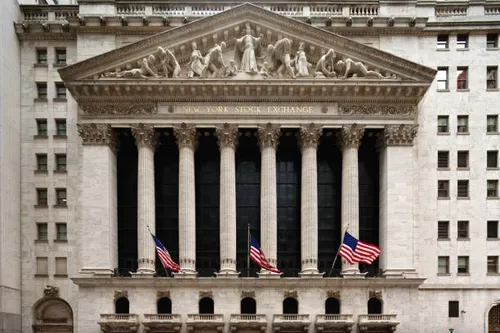Okay, so I’ve been watching the financial waters for a *long* time – not like a fancy Wall Street trader, but I’ve been managing my own money, investing, and buying a house, so I’ve definitely felt the impact of what the Reserve Bank of India (RBI) does. I’m not an economist, by any means, but I’ve learned enough to be able to tell you, honestly, what it *feels* like when the RBI cuts the repo rate. It’s more than just numbers on a screen; it affects your wallet, your investments, and even the prices of things you buy. And lately, there’s been a lot of talk about these rate cuts, so I wanted to break down what they actually mean, how they hit people like me, and what it all tells us about the overall economy.
Let’s be real, financial stuff can be confusing. The RBI – that’s like the central bank of India – controls the interest rates that banks charge you for borrowing money. The *repo rate* is the main one we’re talking about here. Basically, it’s the rate at which the RBI lends money to commercial banks. When the RBI cuts the repo rate, it becomes cheaper for banks to borrow money, which, in turn, should make things more affordable for everyone – especially those of us taking out loans and saving money.
I bought my first home about five years ago, and let me tell you, securing a mortgage felt like navigating a maze. The interest rate on my home loan was a *huge* factor in my monthly payments. When I was initially getting pre-approved, interest rates were significantly higher than they are now. Seeing the RBI start to cut rates felt like a breath of fresh air. I remember reading about it and thinking, “Okay, maybe my EMI won’t get so much bigger next month.” And, honestly, it has. Over the past couple of months, I’ve seen my monthly payments drop by a noticeable amount – maybe around 0.5% to 1%, depending on the specific bank. It’s not a huge amount, but every little bit helps, especially with inflation still creeping around the edges.
The impact on other types of loans is similar, though perhaps not as dramatic as with a mortgage. Personal loans, car loans – they all rely on the repo rate as a base. So, a lower repo rate means lower interest rates on those loans too. It’s a ripple effect, really.
Now, let’s talk about Fixed Deposits (FDs). I’ve been a big believer in putting money into FDs for a while now – it felt like a safe way to grow my savings. When the RBI cuts the repo rate, banks often respond by lowering the interest rates they offer on FDs. It wasn’t huge at first, but recently, I’ve noticed the returns on my FD have increased slightly. It’s not a wild surge, but it’s definitely a welcome change. You always want to compare rates from different banks to see where you’re getting the best deal, though. I spent a good chunk of time last year looking for the highest FD rates – it *does* make a difference!
Speaking of comparison, understanding what “basis points” means is helpful. It’s basically a measurement of interest rate differences. One basis point is equal to 0.01%. So, if the repo rate goes down from 6.5% to 6.25%, that’s a decrease of 0.25% – or 25 basis points. A 25 bps cut sounds small, but over time, those small cuts can add up and have a big impact on your savings and loan payments. My financial advisor explained it to me like this: “Think of it like climbing a staircase. Each basis point is one step. It doesn’t seem like much at once, but after many steps, you’ve made a significant climb.”
**The Stock Market – It’s More Complicated, But Still Connected**
Okay, this is where things get a little trickier. The RBI’s actions don’t *directly* control the stock market, but they certainly have a significant influence. Here’s how I understand it:
Lower interest rates typically make investors more willing to take risks. Why? Because they can earn a lower return on safer investments like FDs. So, they start looking for potentially higher returns in the stock market. Increased demand for stocks can push prices up. Think of it like this: if you suddenly have a lot more money to spend, you’ll probably be more inclined to buy something that *might* be more expensive, right? It’s a similar principle with investing.
Conversely, if the RBI keeps raising rates (or if the economy is struggling), investors tend to become more cautious. They’ll stick with safer investments, which can lead to a decline in the stock market. I’ve seen this happen in the past – when the economy is uncertain, investors pull money out of the stock market and put it into things they consider more secure.
I’ve been following the market closely, and I’ve noticed a certain optimism since the RBI started cutting rates. Many tech companies and other growth stocks, which are often considered riskier investments, have seen a significant boost in their prices. However, it’s important to remember that the stock market is volatile – it goes up and down. You shouldn’t invest based solely on what the RBI is doing.
Don’t get me wrong, it’s not a guaranteed path to riches! A rate cut doesn’t automatically mean your stocks will skyrocket. It’s one piece of the puzzle, along with things like company performance, global economic trends, and overall investor sentiment.
**RBI MPC – The Brains Behind the Moves**
The RBI’s decisions aren’t made in a vacuum. There’s a committee called the Monetary Policy Committee (MPC) that meets regularly to decide whether to raise, lower, or hold the repo rate. This committee consists of six members: the RBI Governor, three Deputy Governors, and two experts from outside the RBI. They analyze a whole bunch of economic data – inflation, GDP growth, unemployment rates, and many other factors – to make their recommendations.
I find it fascinating to read their minutes after the meeting. They lay out all the arguments they discussed and the reasons behind their decision. It’s a great way to understand *why* the RBI is taking a particular action. You can usually find these minutes on the RBI website. It’s not always easy to follow, but it gives you a deeper insight into the thinking behind the policy.
**Banking Sector Impact**
The lower repo rate has a pretty significant effect on the banking sector. Banks make money by lending money and charging interest. If the rates they can borrow from the RBI are lower, they can offer lower interest rates on loans, increasing their profitability – at least, in the short term.
However, it’s a balancing act. Banks also need to maintain a certain level of capital, so they can’t just hand out loans at ridiculously low rates. They have to consider the risk involved. I’ve been reading articles about how banks are using some of the extra profits to invest in technology and improve their services, which is a good thing for customers.
**Beyond Home Loans and FDs – The Bigger Picture**
While I’ve focused on home loans and FDs because that’s what directly affects my personal finances, it’s important to remember that the RBI’s actions have broader implications for the entire economy. Lower interest rates can encourage businesses to invest in new projects, hire more people, and expand their operations. This, in turn, can lead to economic growth.
However, low interest rates for too long can also create problems. They can fuel excessive borrowing and inflation—which I mentioned earlier—and also distort investment decisions. That’s why the RBI has to be very careful about how aggressively it cuts rates. The goal is to find the right balance between stimulating economic growth and maintaining price stability.
**My Takeaway (and a Word of Caution)**
As someone who’s been navigating the financial world for a while, I’ve learned that you can’t predict the future with certainty. The RBI’s actions are just one factor influencing the economy and the markets. There are always unexpected events that can throw things off course—geopolitical tensions, global pandemics, supply chain disruptions…the list goes on.
What I *can* say is that the recent rate cuts are definitely a positive sign for home loan borrowers and FD investors. They’re providing some much-needed relief. But it’s crucial to do your own research, compare different options, and don’t just blindly follow the news. Talk to a financial advisor if you need help making informed decisions.
And please, don’t assume that every rate cut automatically means you’ll get a huge windfall. It’s a gradual process, and the impact will vary depending on your individual circumstances.
**Resources for Further Learning:**
* **Reserve Bank of India (RBI) Website:– This is the official source for all things RBI related.
* **Moneycontrol:– A popular website for financial news and analysis.
* **Livemint:– Another excellent source for business and financial news.
***
Do you want me to elaborate on a specific aspect of this post, such as:
* A deeper dive into the MPC’s decision-making process?
* Specific examples of how different types of loans are affected?
* How to choose the right FD rates?
Sourashis Chanda brings readers their unique perspective on Business, Economy, Health and Fitness. With a background in Health and Physical Fitness of 2years, I am dedicated to exploring [what they aim to achieve with their writing, on the sustainable Economy of the country, various pro tips about business, latest goverment news, with some tips in health are and Fitness.







